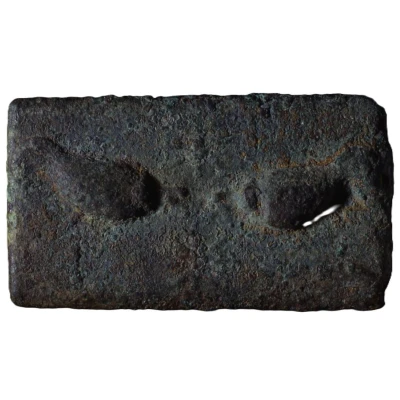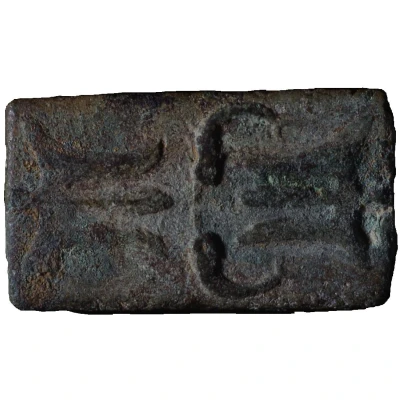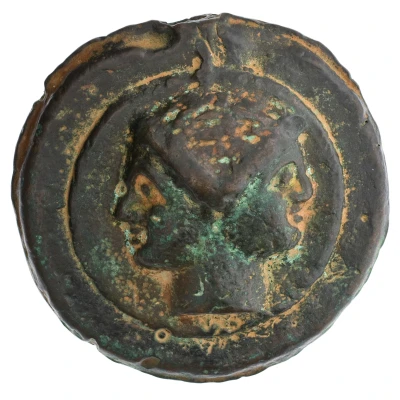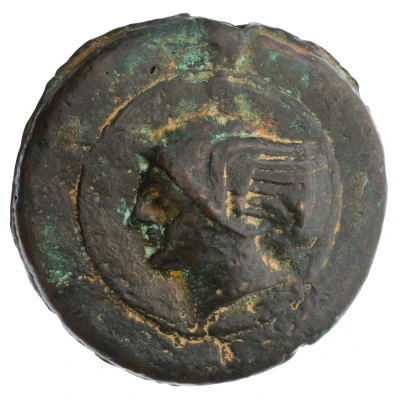


© British Museum
Aes Signatum Anonymous 280 BC - 250 BC
| Bronze | 1491 g | - |
| Issuer | Rome › Roman Republic (509 BC - 27 BC) |
|---|---|
| Period | Republic (509 BC - 27 BC) |
| Type | Standard circulation coin |
| Years | 280 BC - 250 BC |
| Value | As (1) |
| Currency | As (circa 280-221 BC) |
| Composition | Bronze |
| Weight | 1491 g |
| Size | 168 × 95 mm |
| Thickness | 20 mm |
| Shape | Rectangular (irregular) |
| Technique | Cast |
| Demonetized | Yes |
| Updated | 2024-10-06 |
| Numista | N#383448 |
|---|---|
| Rarity index | 100% |
Reverse
Two tridents with two dolphins between.
Comment
The designs on this currency bar are thought to refer to naval battles of the First Punic War (264 BC-241 BC). The tridents and dolphins on the reverse symbolise the sea, and the two stars and chickens on the obverse are thought to refer to the function of Castor and Pollux as protectors of sailors (Crawford 1974, p.718, note 2).Interesting fact
One interesting fact about the Aes Signatum coin is that it was used as a form of currency during a time of economic reform in ancient Rome. The coin was introduced by the Roman Republic in 280 BC as part of a series of measures aimed at standardizing weights and measures, and it remained in circulation until 250 BC. Its design featured the image of a sheep on one side and a tree on the other, which symbolized the agricultural wealth of Rome. The use of bronze in the coin's production also reflected the abundance of this metal in the region. Overall, the Aes Signatum coin played an important role in facilitating trade and commerce during a period of significant economic growth and development in ancient Rome.



